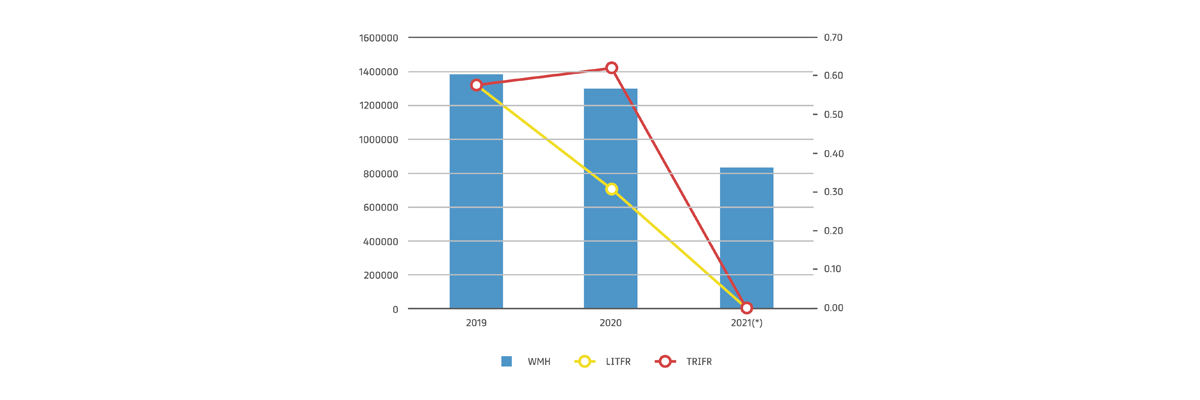Safety culture: essential to Prysmian’s strategy

“Safety is a shared commitment to protecting ourselves, our loved ones and all of our colleagues, every day,” said CEO Valerio Battista recently. “Wherever we are, we need to pay attention to our behaviour and actions because each of our lives is priceless.” Alessandra Gavazzi, Quality and HSE Director of Projects BU, and Paolo Serio, HSE Manager, share valuable insights into how Prysmian is implementing a sustainable safety culture.
“People are our most important asset,” states Alessandra. “So, we feel accountable for ensuring people can work in a safe environment, without compromises. Our strategic performance targets contain a number of HSE-related items — we need to meet our business needs while ensuring that safety is a top priority in every decision-making process.”
Alessandra Gavazzi
Quality and HSE Director of Projects BU

Paolo adds: “We focus on promoting behaviour that supports this, for example encouraging people to take care of each other. Our management’s role is to lead by example — actions speak louder than words and just talking about safety is not enough! What we do determines how people behave in the Company and how we are perceived. Positive reinforcement is important. We make a point of telling people they are doing the right thing, instead of focusing on what might be wrong.”
”It is important that people perceive we are here to help them,” Alessandra continues, “and that everyone understands that safety is tied to taking care of people and their wellbeing. The key idea behind our safety strategy is simply making our lives safer. That’s a vital pillar of Prysmian’s overall strategy. Ensuring that safety is seen as something essential to work and private life is another pillar. Our corporate ‘Zero & Beyond’ philosophy aims to incorporate this principle in everything we do, raising awareness and promoting a behaviour aimed at focusing on this issue — care for themselves and for others.”
“Not everyone perceives risks in the same way,” Alessandra says. “Some people do not see danger where others do. We work to ensure that risks are assessed in an objective way and that risks and the related mitigating measures are acknowledged and understood by everyone. To be effective in this, collaboration with all the functions within the organisation is essential, as is the contribution of who is actually carrying out the work activities; their input is taken into careful consideration when defining mitigating measures and preparing safety procedures. We continuously look for areas in which we can do better and the feedback, action and monitoring processes in place allow us to capture potential improvements and assign priorities.”

“Risk also extends to subcontractors,” explains Paolo. “The market is always changing, and customers are becoming more demanding. Our working environment is very complex: continuous change monitoring and management are necessary during risk assessments. Being a market leader means we need to perform exceedingly well in HSE and the companies we work with have to adhere to the same standards as we do. However, they often do not have the same resources and capabilities we have and it is our duty to lead and coach them in raising their HSE performance.”
Alessandra points out: “To this end, three years ago we reinforced our best practices and messages at a convention with 100 suppliers and key customers. The event, entitled ‘Working safely is the only option’, also presented case histories and it was a big opportunity to reinforce our commitment to zero accidents.”
“We modified our subcontractor requirements,” Paolo continues, “and we established tender assessments for projects on which HSE and technical aspects needed to be aligned. This has proven very helpful in avoiding potential project execution risks. We have also expanded on-site supervision, which helps identify weaknesses and best practices. Reporting is a crucial way to collect valuable information to continuously improve. As we keep adapting to market needs, we also continue to update our processes. We will define more incentive and reward schemes to raise awareness even further and stimulate engagement and proactive behaviour in a structured, standardised manner.”
“The way we ask our subcontractors to be our ‘partners in safety’ is linked to a similar approach encouraged by our customers,” explains Alessandra. “We want everyone working on a Prysmian project to feel part of a unique team. Such collaboration between all parties is very effective and ensures the whole value chain has the same target.“
“During the recent Safety Week, we presented our best practices for different environments, as Prysmian projects bring us to all kinds of locations, from factories to offshore platforms. The initiative was very well received, even though it had to be conducted ‘virtually’,” concludes Alessandra. “Nevertheless, it showed all the stakeholders how important this topic is to our Company.”
Alessandra Gavazzi holds an MSc in Engineering and has over 20 years’ experience in Quality and HSE Management in manufacturing and EPCI projects.
Paolo Serio is a chemical engineer with 15 years’ experience in HSE and Process Safety in EPCI projects.
Safety facts and figures
Prysmian’s Projects BU has reported encouraging HSE Performance results related to installation activities, including with regard to Prysmian’s fleet. The following graph shows that LTIFR and TRIFR decreased in the past 3 years, with no lost time injuries since July 2020.

However, keeping a high focus on HSE risks is of paramount importance and the following figures for 2021 (up to October 2021) give an overview of the efforts put in place to ensure a constantly safe workplace during the execution of the onshore and offshore activities




